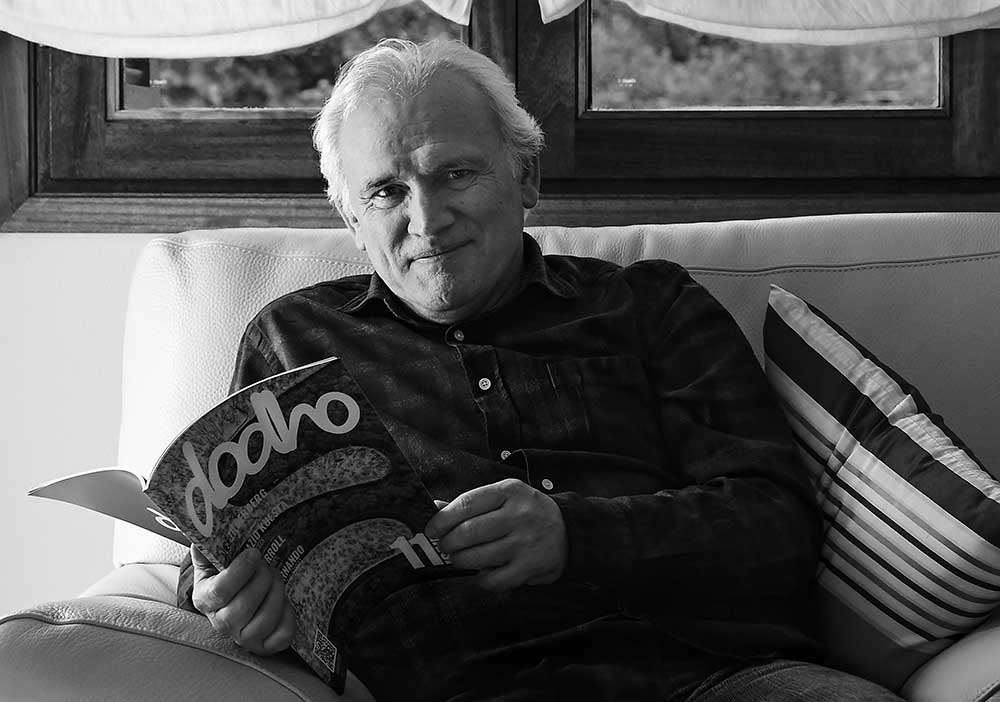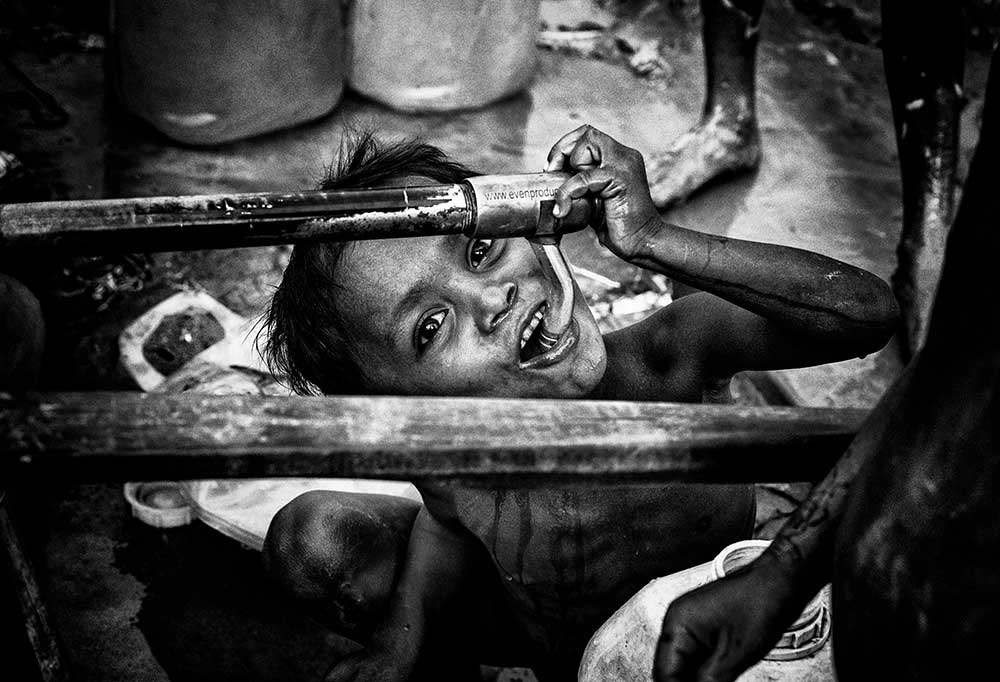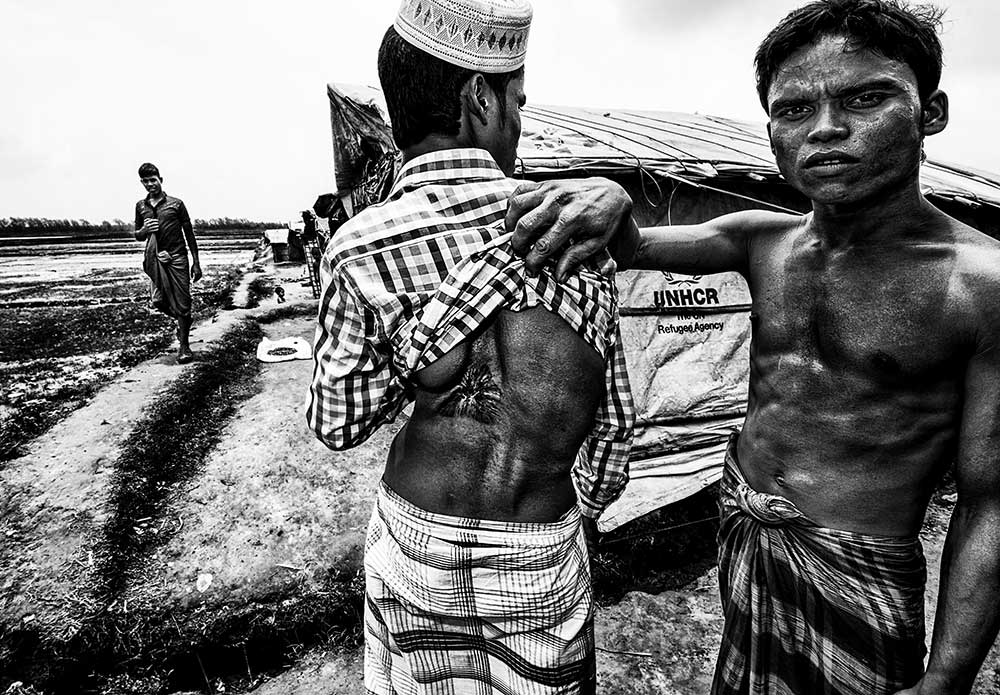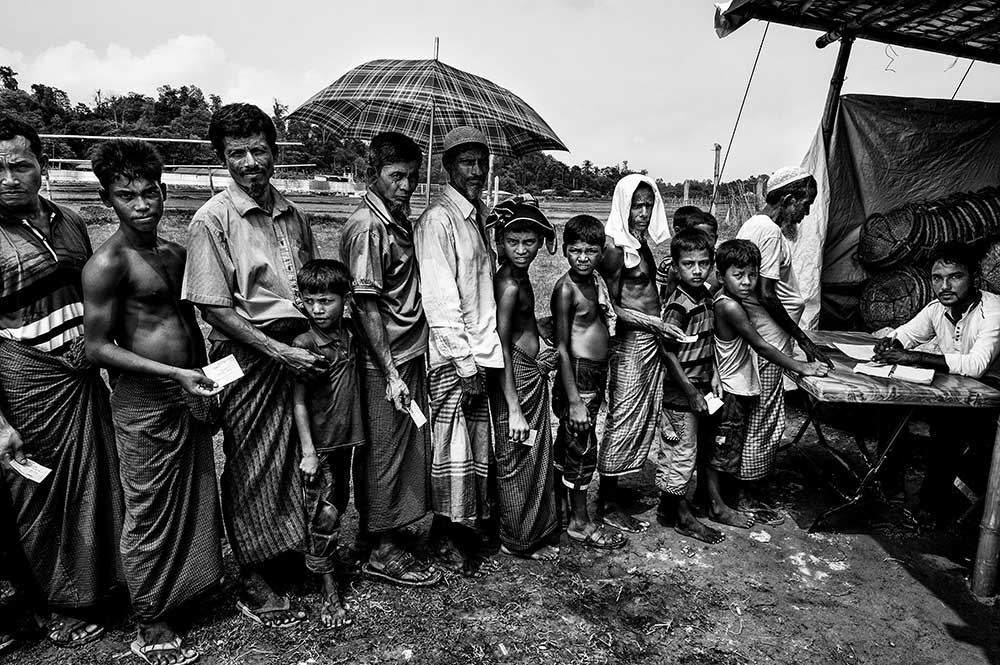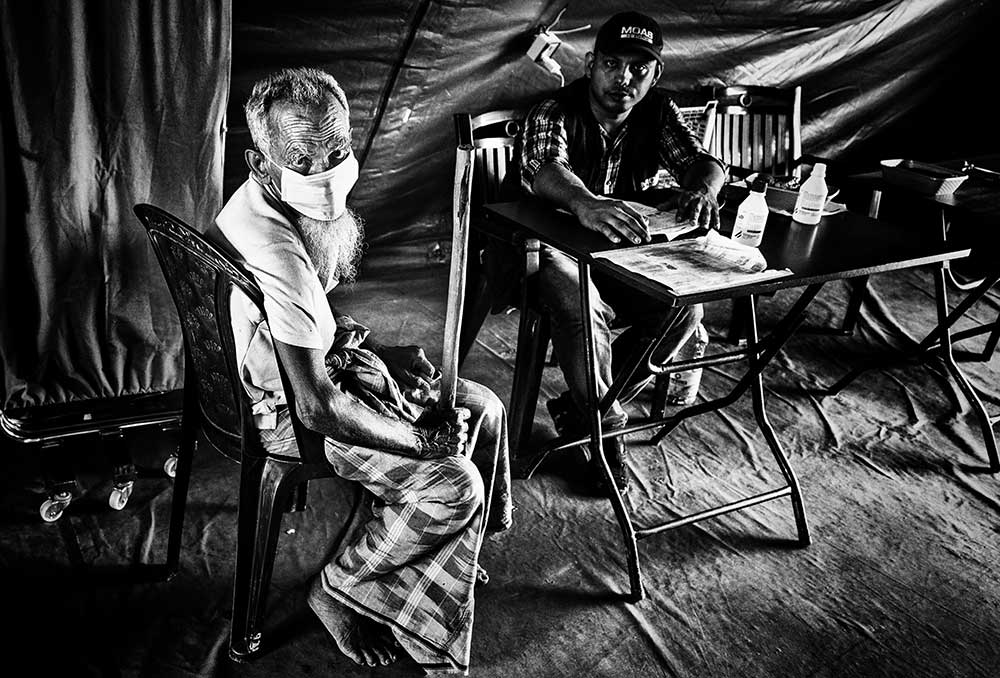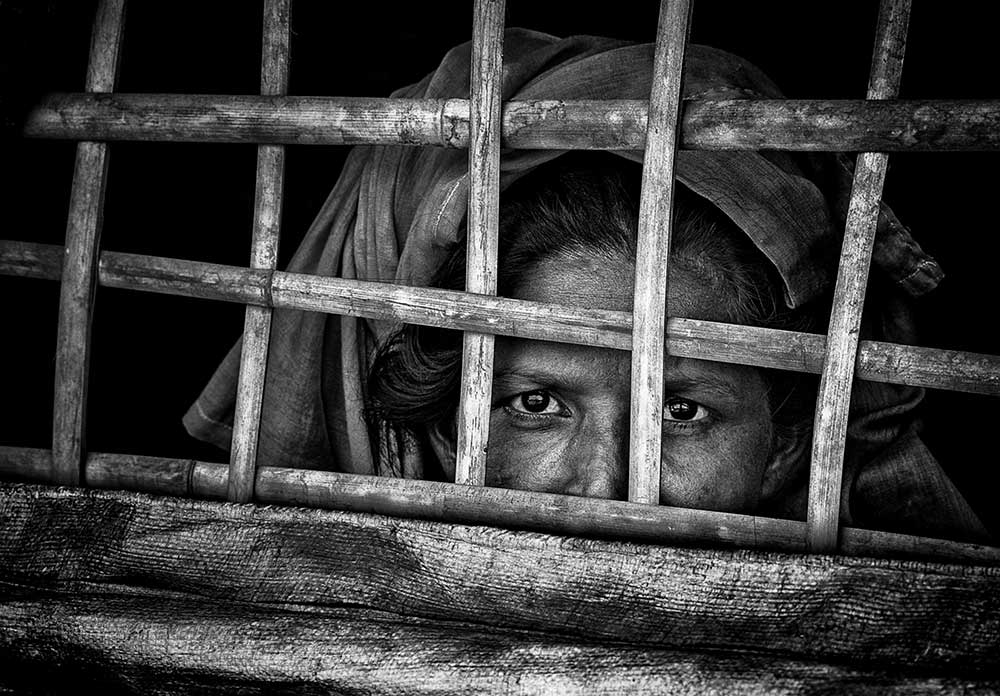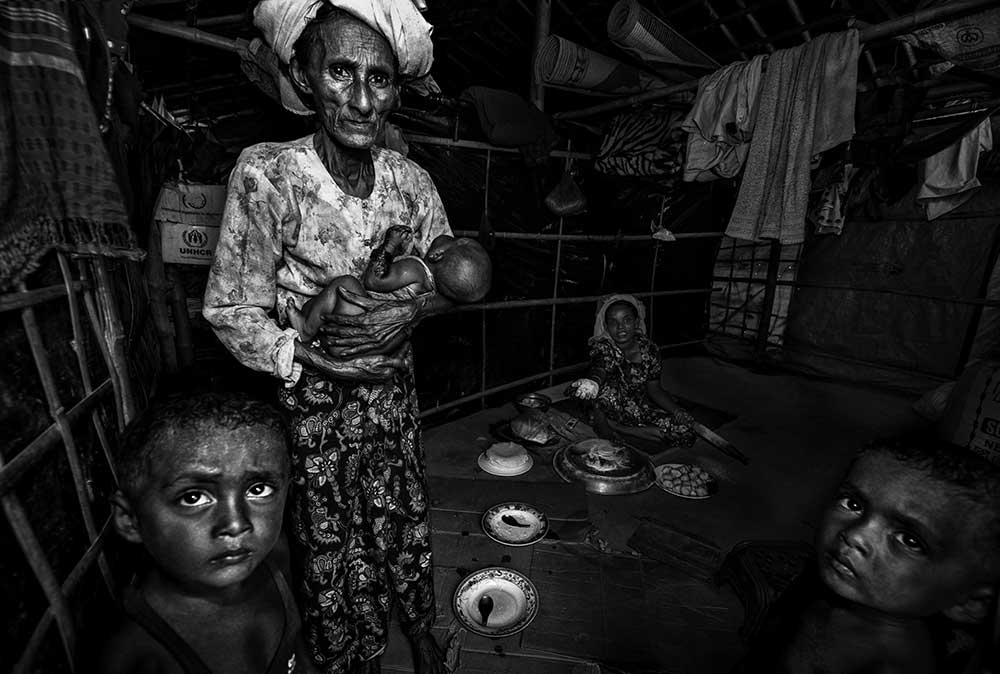I am an amateur photographer with a passion for street and documentary photography. I studied economics and business and I work as a civil servant for the Goverment of the Basque Country.
Photography has not been my lifelong hobby. In fact, it all started off after some travel experiences. It was back september 2005 that I traveled to the north of India. My photographic gear that time was a compact camera, and when back home I took a look at my pictures I noticed that it was not what I saw: most of the pictures were blurred, and so on. In november that year I went to Syria and it happened all the same. The pictures did not look as what I recalled from those places. That was the main reason why I attended a photography course organized by a non-profit organization called “Sociedad Fotográfica de Gipuzkoa” in Donostia-San Sebastian (Spain). This is where, thanks to its members, I learned the basics of photography. After that, my knowledge grows by reading magazines and books—especially from authors of the Magnum agency—and seeing a lot of photos. [Print Edition][Digital Edition]
The power of these photographs is truly immense. As I read your statement while observing some of these images, I really grasped that sense of desperation that you are attempting to highlight. Especially when you mentioned the woman you encountered who’s anguish due to gut pain and the condition of many of these houses forced you to go outside. Could you describe to us what kind of limitations you encountered photographically. Was there ever a moment that made you think twice before capturing an image?
When we arrived at the camps, I told Salim, my guide, to ask for permission to take some pictures. The answer was yes, of course, there was no problem at all. With the authorization and always respecting people I had overcome the greatest of limitations. As I was carrying a wide-angle lens and a flash, I had no technical problems to shoot inside the houses. The
problem was what I found inside them. In the case of the woman with gut pain that I wrote about in the text impressed me: we left her giving some money to go to the doctor. There were other cases in which young children were the protagonists: asleep on the ground,
panting because of the heat and humidity, etc. But there was one in which I was unable to react for a moment: when I entered one of the houses I saw an elderly man lying on the ground, and instantly I stood still, because I thought he was dead; he was in the bed and asleep. I also remember that I could not photograph a NGO´s food delivery area due to a lack of permission to do it and also in some of the medical centers. On one occasion, a doctor who was caring for a woman on the street told me that I could not take any pictures of him wearing the logo of the charity he belonged to and very kindly he took it off and allowed me to photograph him. And I don’t remember a moment in which I had to think twice to capture an image.
One observation which I found very interesting was this contrast between the innocence of children and the grieving women whose husbands were lost due to war. Of course, this is a very delicate subject, but were you ever invited to discuss at any point the gravity of the situation with these women? Or possibly a discussion about the Burmese war and its effects on the people of ‘Rohingya’?
On the second day, Salim suggested to give some more money to the widows. I agreed, and we decided to do it personally. He managed to gather about five and we met them on the street, between two houses. They invited us to sit in some chairs and while they were standing where they were they answered all the questions the guide asked about their situation. I saw very young women holding their children in their arms, talking about their misfortunes and how they had lost their husbands and loved ones during the war. I was amazed at what they were saying. And watching them, I did not see any bad gesture, neither listen any screaming. It seemed as if what happened was something of the past and totally normalized. And absolutely not, we did not discuss about the war or its consequences, nor was there any kind of indoctrination on their part.
One image which I found to be very impactful was the queue of men with tickets in hand, possibly waiting for supplies. It’s interesting because the majority of the men in this picture are all looking directly at the camera. They all seem to have the same wariness in body language, simultaneously their faces all seem to share the similar emotions as they have been forced to surrender to this kind of life. Could you tell us a little bit about how to came to shoot this photograph, and in particular how you managed to call the attention of all of these men?
Walking through one of the camps I saw a kind of shack in which there were many people queuing. I approached them and noticed that they were waiting to dispatch what they had been granted in another shack. They had a sort of voucher and were waiting their turn to collect materials; mainly, canvas covers to build or repair their homes. There were also tools, wheelbarrows, etc. In this picture I had to wait for a while because there were people around distributing material which made it difficult to get the frame I was looking for. I wanted to take only the line of people and the person who was collecting the tickets. And I really do not know if they have been forced to surrender to that kind of life, but what else could they do? Supposedly, they cannot leave the camps, nor work outside and depend on the help of others. It was not difficult at all to capture their attention when I appeared in front of them with my camera: I was the novelty out there. Anyway, I always try to catch the attention of the people I photograph; I want them to look at the camera to let them know that I am photographing them.
Another image which does stick out from the rest of this collection is that of the child drinking from a pipe. In this sea of desperation, poverty and agony, this image is somewhat like the coloured flour on a black and white painting. It’s comical and fun, it showcases the light-heartedness of youthhood and can even make you forget the seriousness of this poor boy’s life. Was it a conscious decision to have this image placed in this collection, in order to break the seriousness of the photographs before and after it?
Absolutely not! It seems that that smile in the midst of the sadness is something funny, but it is not. The child is laughing because I am there and laughing as well. It was a potable water point to where mainly women and children went to get their water supplies, carrying containers that seemed to weigh more than themselves. Elsewhere, it was fun to see them pouring water over themselves to cool off from the heat, but in this case they were going to do hard tasks. And speaking of children, I would like to highlight a photo that means a lot to me and I think is good to say something about the moment of capture. It is the photograph in which a few children are seen behind a fence. It turns out that they were seeing how other children (I do not know why, and neither asked the reason) received foam trays with food (in the background of the photo you can see some of these). There was an esplanade in which there were many NGO shacks and many children. Those who appear in the photograph saw how others came out with those foam trays and therefore, the child who sticks out his tongue as if he felt the content. Maybe I should have included some funny pictures in this project, even if I only saw them in the kids playing around there.
The conclusion of this project is that you seem to have been personally affected, or at least changed in some way after visiting the refugee camps. Furthermore, you mentioned in your statement that the leader of the Myanmar Government and Nobel Peace Prize winner Aung San Suu Kyi, ‘defended the Myanmar army, and denied in person and before international justice the Rohingya genocide’. Has this project been a sort of therapeutic release of feelings for you after witnessing what you did during your time there? Or are you attempting to bring to light the misjudgment of Aung San Suu?
In 2018, I had the opportunity to spend some days visiting the Rohingya refugee camps and, at that time, I did not even know who Aung San Suu Kyi was. In 2019, when I read her statements regarding Rohingya refugees I got astonished, and wrote it down along with what the UN researchers said about: two ways to see the same problem, I thought. The target of this project was to record what I experienced there. And in this sense, it really meant a release of feelings for me, but the objective was to show what I saw and what I felt living with them. And no, I am not attempting to bring to light any misjudgment.
Could you possibly expand a little bit about your first interactions with the widows of Rohingya, specifically in the account you gave when delivering gifts?
As stated in the project, we arrived at one of the camps on the eve of the Eid Mubarak festival. We bought some things to take to the camps, mainly clothes. Salim attached great importance to delivering them that same day, and that was because it is customary to wear new clothes at the end of Ramadan. It was raining heavily and when we got there, we entered
directly into a cabin that served as a gathering and food shopping point. Soon after being there, many people started coming. One of them was the person in charge of the camp. And we began to deliver the gifts to the people the responsible told us was the most needy. And these were the widows and the elderly. I was surprised to see how the clothes we gave them were grabbed and held against their bodies. It seemed like they felt it would bring them something good, or maybe it was the fear of losing them. After that, we started giving some money. Suddenly, many of them began pushing, screaming, and asking for more. In the photograph representing this moment, an elderly woman is shown reaching out to take the money I gave her while photographing her. How hard he took my hand!
I would like to finalize this interview by asking you about the future of this particular body of work, can we expect to see this as a political piece in order to create awareness about these people and their desperate situation?
I do not know what the future of this project will be, but the truth is that it was not carried out with the intention of making any policy. On two occasions I have been asked for information and photos with the intention of helping the people who appear in them: if the project only served for that purpose, it would be justified. I am very grateful to Dodho Magazine and its great team for making this project visible. Thank you very much for everything.
Francesco Scalici
A recent MA graduate from the University of Lincoln, Francesco has now focused on landscape photography as the basis of his photographic platform. An author for DODHO magazine, Francesco’s interest in documentary photography has turned to writing and has had various articles, interviews and book reviews published on platforms such as: ‘All About Photo.com’, ‘Float Magazine’ and ‘Life Framer Magazine’. Currently on a photographic internship, Francesco has most recently been involved in the making of a short film titled: ‘No One Else’, directed by Pedro Sanchez Román and produced my Martin Nuza.



